San Diego, California, is the eighth largest city in the United States and an important base of operations for the U.S. Navy. The city lies in the southwestern corner of the country and is bordered by the Pacific Ocean on the west and by Mexico on the south.
San Diego has experienced dramatic growth since the mid-1900’s. In 1940, it ranked 43rd in population among U.S. cities. But by 2020, it had jumped to 8th. Among cities on the Pacific Coast, only Los Angeles is larger.
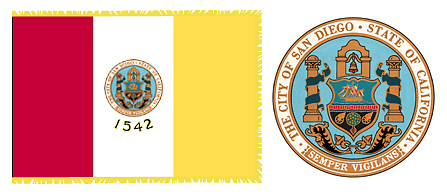
San Diego has one of the finest natural deepwater harbors in the world. The harbor, which is on San Diego Bay, serves oceangoing ships and United States Navy vessels. The city is a major tourist center. San Diego’s mild, sunny climate helps make the city a popular vacation spot. The San Diego Zoo and SeaWorld each attract millions of visitors every year. San Diego has a thriving arts community, with numerous museums and theaters.
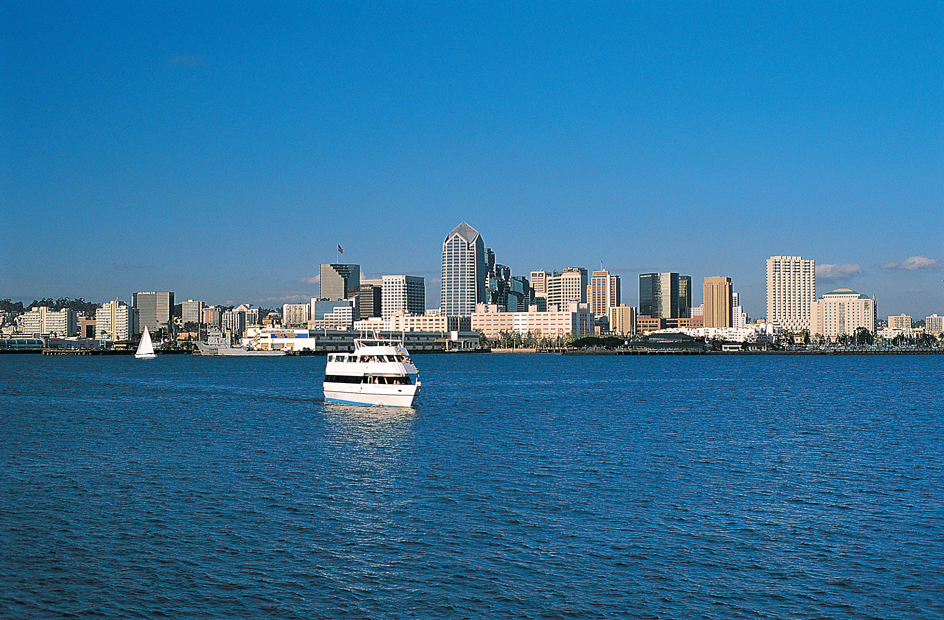
The city is sometimes called The Birthplace of California. It was founded in 1769, when Spanish soldiers built California’s first presidio (military fort) on the site. The Spaniards chose the location because of the fine harbor. That same year, a Franciscan priest, Saint Junípero Serra, established California’s first mission within the presidio.
The city
Layout of San Diego.
San Diego is the seat of San Diego County. The city’s southern boundary forms part of the border between the United States and Mexico. Los Angeles lies about 125 miles (200 kilometers) to the north.
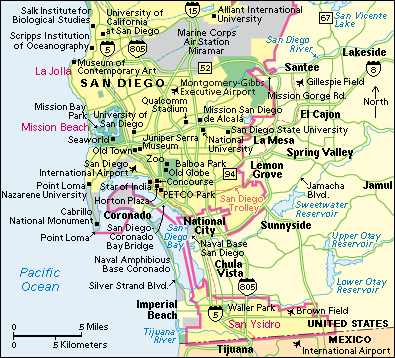
Downtown San Diego extends inland from San Diego Bay to Balboa Park—the site of the famed San Diego Zoo. Downtown’s San Diego Concourse, a modern civic center, lies in the heart of the busy downtown area. It includes the City Administration Building as well as the San Diego Civic Theatre, the city’s largest theater. The San Diego Convention Center has a nautical design in keeping with its location on the harbor’s edge. The 16-block Gaslamp Quarter draws tourists and residents downtown for dining, dancing, and music.
San Diego’s original downtown was established a few miles northwest of the present downtown. This area is known as Old Town. A number of historic buildings that made up the original downtown have been restored or reconstructed. They surround a plaza at Mason Street and San Diego Avenue. Just northeast of Old Town is Presidio Park, the site of the original presidio.
Point Loma, a peninsula that forms part of the entrance to San Diego Bay, is a popular tourist destination. It includes the Old Point Loma Lighthouse and the Cabrillo National Monument. The lighthouse, first lit in 1855, is one of the oldest lighthouses on the Pacific Coast. The monument honors Juan Rodríguez Cabrillo, a Portuguese explorer who sailed into San Diego Bay in 1542.
The geography of the San Diego area includes numerous canyons and mesas. Some neighborhoods were built in the canyons, and others overlook them. In some areas, canyons separate neighborhoods.
Many of San Diego’s neighborhoods and resort areas overlook the Pacific Ocean. Such areas within the city include La Jolla << luh HOY uh >>, Mission Beach, and Pacific Beach.
The metropolitan area
of San Diego extends over the entire county. It includes 17 incorporated cities and towns besides San Diego. One of the best-known suburbs is the resort town of Coronado, on a peninsula in San Diego Bay. The San Diego-Coronado Bay Bridge, which is about 21/4 miles (3.5 kilometers) long, connects Coronado to downtown San Diego. Other suburban San Diego communities include Carlsbad, Chula Vista, Del Mar, El Cajon, Escondido, Imperial Beach, La Mesa, National City, Oceanside, Santee, and Vista. 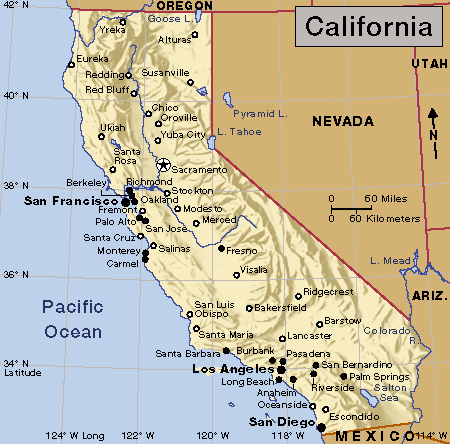
San Diego’s suburbs also offer numerous points of interest. Perhaps the most famous is San Diego Zoo Safari Park, a wildlife preserve in Escondido. Also in Escondido, San Pasqual Battlefield State Historic Park commemorates the 1846 Battle of San Pasqual. This was the most significant battle fought in California during the Mexican War (1846-1848). Visitors to Chula Vista can tour the Living Coast Discovery Center, one of the few remaining salt marsh habitats on the Pacific Coast. The marsh is regularly flooded by seawater at high tide. A famous site in Oceanside is Mission San Luis Rey de Francia. Established in 1798, it was once the largest and most prosperous of the California missions.
People
Ethnic groups.
San Diego has wide cultural diversity. About 25 percent of the city’s residents were born outside the United States. Many of San Diego’s people speak a language other than English at home. Non-Hispanic white people make up about 40 percent of the city’s population. Hispanic Americans, who may be white, Black, or of mixed ancestry, make up about 30 percent. The majority of Hispanic people in San Diego are of Mexican heritage. African Americans account for about 6 percent of the population. Together, people from Asia and the Pacific Islands make up nearly 20 percent of the population. San Diego County includes 18 American Indian reservations, representing several Native American nations.
Housing.
Housing costs in San Diego rank among the highest in the United States. The region’s dwellings include elegant Craftsman-style houses built in the 1920’s and 1930’s. These houses feature intricately carved cabinets and woodwork. Some older neighborhoods have many ornate, Victorian-style homes. After World War II ended in 1945, a housing boom introduced numerous, more affordable two- and three-bedroom bungalows. Spanish influences, such as stucco (rough plaster) walls and red tile roofs, appear on both older and newer houses.
The San Diego area has several military facilities. The thousands of military personnel stationed there contribute to a shortage of good low-cost housing. The city also faces the problem of providing shelter for its homeless population.
Education.
An elected Board of Education supervises the city’s public school system. The rest of San Diego County has dozens of other public school districts. Many church-supported and other private schools also operate in the county.
San Diego has a number of colleges and universities. The University of California at San Diego, in La Jolla, is part of the University of California system. The city’s famous Scripps Institution of Oceanography is part of the university. San Diego State University is part of the California State University system. Other colleges and universities in the area include National University, Point Loma Nazarene University, and the University of San Diego.
Social problems.
Like many large cities, San Diego faces the problems of poverty and homelessness. Numerous public and private organizations work to provide shelter and social services. San Diego County and the San Diego Unified School District provide special services for homeless children.
The city’s location close to the Mexican border creates both benefits and problems for the city. Mexican residents and tourists who cross the border from Mexico into San Diego County frequently shop in the San Diego area, spending billions of dollars per year. However, some Mexicans come to the United States to work without immigration papers that they need to hold jobs legally.
Cultural life
The arts.
The San Diego Symphony plays at Copley Symphony Hall and at the Rady Shell at Jacobs Park. Major theater performances in San Diego are staged at the La Jolla Playhouse and the Old Globe Theatre in Balboa Park. Both theaters have sent successful plays to Broadway. The Old Globe, part of the Simon Edison Centre for the Performing Arts, produces plays by the great English dramatist William Shakespeare each summer.
Suburban performing arts centers include the Poway Center for the Performing Arts in Poway and the California Center for the Arts in Escondido. Both are in northern San Diego County.
Museums and libraries.
San Diego has a wide variety of interesting museums, many in Balboa Park. Among the museums in the park are the San Diego Museum of Art, which features paintings by European masters, and the Timken Museum of Art, which owns a valuable collection of Russian religious art. The Museum of Photographic Arts in Balboa Park houses contemporary and historic photo exhibits. The park is also the site of the Centro Cultural de la Raza and the Reuben H. Fleet Science Center. The Centro Cultural de la Raza features Mexican, Mexican American, and American Indian visual and performing arts. The Fleet Center offers science exhibits, a planetarium, and a large-format motion-picture theater.

Along the wharf, the Maritime Museum of San Diego features the Star of India, an iron sailing ship built in the 1860’s. In Presidio Park, the Junípero Serra Museum has exhibits on early San Diego history. The Museum of Contemporary Art San Diego, which has a La Jolla branch and a downtown branch, displays modern painting, sculpture, and photography. The Birch Aquarium at Scripps in La Jolla, part of Scripps Institution of Oceanography, displays marine life from around the world.
The San Diego public library system consists of the Central Library downtown and branches throughout the city. The San Diego County library system allows suburban libraries throughout the county to share books and other materials with one another.
Recreation.
San Diego’s mild climate allows residents to enjoy an outdoor lifestyle all year long. San Diego County has 70 miles (112 kilometers) of ocean beaches. The city of San Diego has several hundred parks. Mission Bay Park, one of the largest parks, covers more than 4,600 acres (1,860 hectares). It includes an aquatic park with areas for fishing, swimming, and boating. The park is also home to SeaWorld, a 150-acre (60-hectare) marine park featuring dolphins, sharks, penguins, and killer whales. The restored Giant Dipper roller coaster is in nearby Belmont Park. It was built in 1925.
The famous San Diego Zoo is in Balboa Park. It is known for its work in preserving endangered species of animals. It houses thousands of animals in a 100-acre (40-hectare) garden of tropical plants and flowers. The zoo also operates the popular San Diego Zoo Safari Park in Escondido.
The city is the home of the San Diego Padres of baseball’s National League. From 1961 to 2016, it was also the home of the National Football League’s San Diego Chargers. The team moved to Los Angeles following the 2016 season.
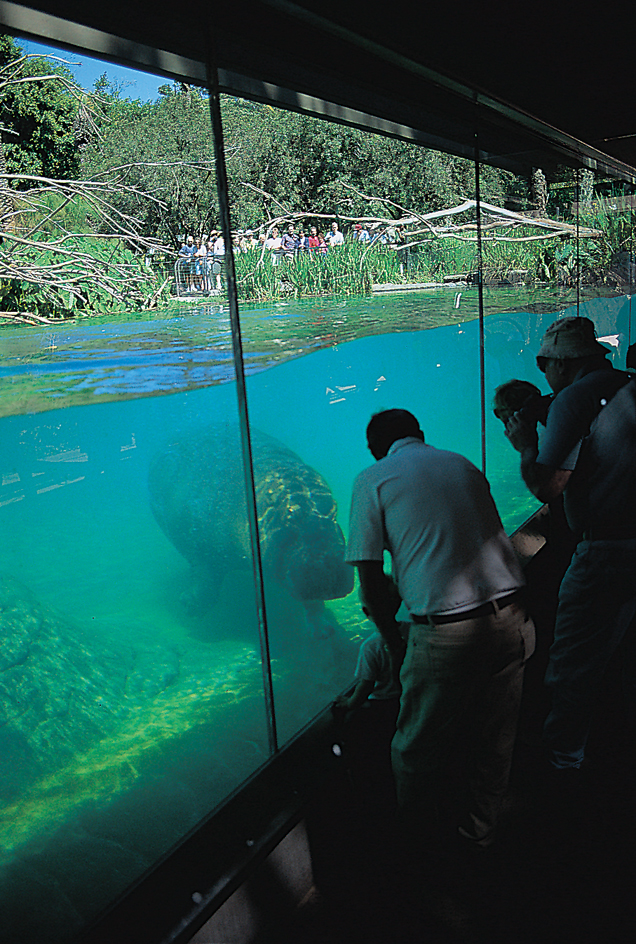
The Mexican city of Tijuana lies about 15 miles (25 kilometers) south of downtown San Diego. Tijuana’s attractions include gift shops, restaurants, nightclubs, bullfights, and horse races.
The Palomar Observatory, which houses the huge Hale Telescope, has a visitor’s gallery and offers guided tours. The observatory stands on Palomar Mountain, about 45 miles (70 kilometers) northeast of downtown San Diego. Also northeast lies the Anza-Borrego Desert State Park, which has hiking and driving trails through 600,000 acres (240,000 hectares) of California desert. A spectacular array of wildflowers bloom there in March and April.
Economy
Manufacturing is an important economic activity in the San Diego area. The area’s major manufacturers build ships and make medical instruments and electronic and oceanographic equipment.
The armed forces and other government agencies are also important. Many residents work at Naval Base San Diego, Naval Base Coronado, or Naval Base Point Loma.

San Diego attracts millions of visitors a year. Spending by visitors contributes heavily to the economy. Tourism generates many jobs related to dining, lodging, shopping, and recreation.
Several major health and medical research firms are based in the San Diego area. The area ranks among the largest centers for biotechnology in the United States. Several hundred companies in this field apply technology to solve problems in biology and medicine. Tens of thousands of small businesses operate in the metropolitan area.
San Diego County is a leading county in the United States in the market value of its agricultural production. It is one of the world’s leading avocado growing areas.
Major airlines operate out of San Diego International Airport. Passenger railroads and several steamship lines serve the city as well. San Diego Transit buses serve the city. The San Diego Trolley light rail system carries millions of passengers a year between southern and eastern parts of the county and downtown San Diego.
San Diego has one general-interest daily newspaper, The San Diego Union-Tribune.
Government
San Diego has a mayor-council form of government. Voters elect a mayor and nine City Council members to four-year terms. Property and sales taxes are the chief source of San Diego’s income.
San Diego County is governed by a five-member Board of Supervisors. Board members are elected to four-year terms. The Board of Supervisors appoints a chief administrative officer to handle the day-to-day affairs of government.
History
Early years.
Native Americans lived in what is now the San Diego area long before Europeans arrived. The Spaniards called the indigenous (native) people the Diegueno. Juan Rodríguez Cabrillo was probably the first European to enter the region. Cabrillo, a Portuguese explorer in the service of Spain, sailed into what is now San Diego Bay in 1542. An expedition led by the Spanish explorer Sebastián Vizcaíno reached the area on Nov. 10, 1602. Vizcaíno’s flagship was called the San Diego (Spanish for Saint Didacus). On November 12, the feast day of San Diego de Alcalá, a Spanish saint, priests with the expedition said Mass. The bay was named San Diego, probably to honor the flagship and the feast day.
The first European settlers came into the area in 1769. That year, Spanish soldiers from Mexico constructed a presidio on a hill near San Diego Bay. Saint Junípero Serra, a Franciscan priest, established California’s first mission within the presidio that same year. The mission, the presidio, and—later—the city were also given the name San Diego. Mission San Diego de Alcalá was the first of 21 missions established in California. Serra established eight more missions in California before he died in 1784.
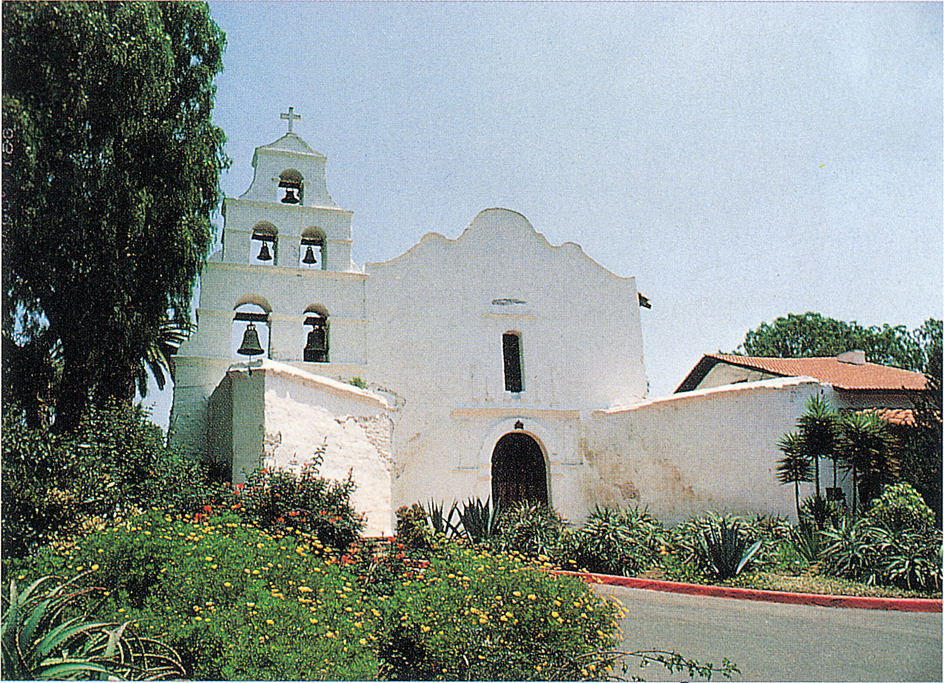
In 1774, the mission was rebuilt about 5 miles (8 kilometers) up the valley, closer to an Indian village. The new location also had a better water supply for crops. During the early 1800’s, colonists began settling at the bottom of the hill on which the presidio stood. This is the area now known as Old Town.
The trading of cattle hides became an important activity in the area during the early 1800’s. San Diego’s port helped make the settlement a center of the Pacific Coast hide trade. Close to a migration route for gray whales, the port also was a base for whaling ships from the 1850’s to the 1870’s.
San Diego was organized as a town in 1834. It adopted a city charter in 1850, the same year that California became a state. By 1860, San Diego had a population of 731. A businessman named Alonzo E. Horton purchased land along eastern San Diego Bay in 1867. He laid out an area called New Town, which soon became the new center of the town.
Growth.
The California Southern Railroad provided the first rail link to San Diego from the eastern United States in 1885. Its arrival created a land boom. Business expanded rapidly. By 1887, the city’s population had jumped to about 40,000. But the boom ended suddenly, and by 1890 the population of San Diego had fallen to about 16,000.
During the early 1900’s, a growing demand for tuna led to the establishment of large fish canneries in San Diego. Several companies built their canneries there because of the city’s port facilities and location close to tuna-fishing waters.
In 1915 and 1916, San Diego hosted the Panama-California Exposition, an international fair. The event brought worldwide attention to the city and made Balboa Park a popular tourist attraction.
Military center.
San Diego’s rapid development as a major naval center began during World War I (1914-1918). Naval Air Station North Island opened in 1917, the year the United States entered the war. In 1919, the U.S. Navy decided to make San Diego Bay the home base for its Pacific Fleet. By 1920, 75,000 people lived in San Diego. In 1922, the U.S. Destroyer Base San Diego (now Naval Base San Diego) was established.
Consolidated Aircraft Corporation (later part of General Dynamics but now closed), a major aircraft and defense manufacturer, moved to San Diego in 1935. Other contractors and related companies soon followed. By 1940, San Diego’s population had passed 200,000.
In the 1940’s, the armed forces and defense contractors became the dominant forces in San Diego’s economy. After the United States entered World War II in 1941, San Diego’s airplane plants attracted thousands of workers from throughout the country. The armed services also built new military facilities in the city. Thousands of people received military training in San Diego before serving overseas. Many of these people returned to live in the San Diego area after the war ended in 1945. They enjoyed the area’s mild climate and numerous outdoor recreation opportunities. By 1950, the population of San Diego had risen to more than 330,000.
Economic changes
brought more diversity to San Diego’s economy in the second half of the 1900’s. Competition from Japanese and South American tuna canneries and a decline in the aircraft industry damaged the city’s economic base in the 1950’s. But gains in missile production and shipbuilding helped make up the loss.
Large-scale unemployment followed a further decline in the aircraft and spacecraft manufacturing industry in the early 1960’s. Civic leaders established programs to broaden San Diego’s economic base. Development of several new industrial parks for factories and warehouses helped attract many new industries. In the 1970’s, San Diego grew as a center of health science and medical research activities.
The decline of Cold War tensions in the late 1980’s and an economic recession in the early 1990’s led to a further decline in the role of defense in San Diego’s economy. In 1994, the Martin Marietta Corporation, a major defense contractor, left San Diego, eliminating many jobs. In 1996, General Dynamics Corporation, the region’s largest civilian employer, closed its San Diego-based Convair division (formerly the Consolidated Aircraft Corporation). In 1997, cuts in the federal defense budget resulted in the closing of Naval Training Center San Diego. However, the emergence of new high-technology companies in San Diego helped reduce the economic impact.
Other recent developments.
San Diego completed several major development projects in the 1980’s and 1990’s, including Horton Plaza and the San Diego Convention Center. The city also experienced another dramatic increase in population during this period. By 2000, the city’s population had climbed to about 1,200,000, and the metropolitan area had over 2 3/4 million people. By 2020, the city’s population had further grown to about 1,400,000, and the metropolitan area to over 3 million.
Construction of a new baseball stadium on the waterfront was completed in 2004. The ballpark was part of the redevelopment of East Village, a former warehouse district in the downtown area.
In October and November 2003, wildfires burned nearly 400,000 acres (162,000 hectares) and killed 17 people in San Diego County. In October 2007, wildfires destroyed hundreds of buildings and burned large areas in Southern California. In San Diego County, the area most affected by the fires, officials asked more than 500,000 people to evacuate their homes. Multiple wildfires also occurred in northern San Diego County in the spring of 2014.
San Diego Mayor Bob Filner resigned from office in August 2013. A former aide had filed a sexual harassment lawsuit against him.
